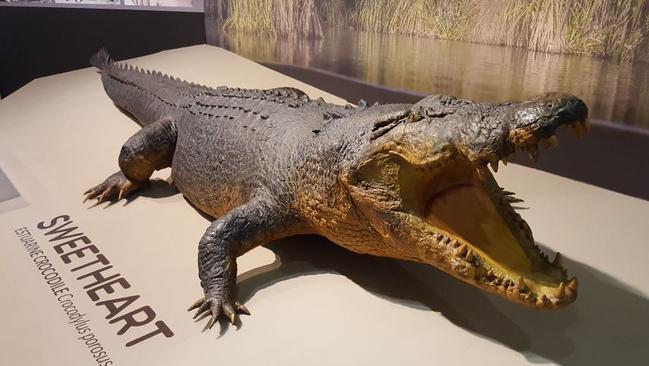Google launches the Australian Natural History platform, unveiling natural treasures
WE take you inside Google’s online museum, which has now been filled with unique Australian treasures for the first time.

AUSTRALIA’S rich natural history has always been one of the country’s best selling points — and now it’s available for the whole world to see.
Google today unveiled their new Australian Natural History platform, showcasing more than 50 immersive collections from partner museums across the country in what will be Australia’s biggest online museum.
Users will be able to learn about impressive specimens like “Sweetheart”, a 5.1-metre-long Estuarine Crocodile from the Northern Territory.

Tipping the scales at 780kg, Sweetheart gained notoriety for attacking small, aluminium fishing boats at Sweets Lookout Billabong, a local fishing spot.
By 1979 he became aggressive and was relocated to a crocodile farm.

Unfortunately, Sweetheart became entangled with a sunken tree and drowned during the capture process.
Engineering director of Google Australia, Alan Noble, said the Google team was “immensely excited” to launch to Natural History platform on Google Arts & Culture.
“This new platform celebrates Australia’s rich and unique offering for natural history, which we can now provide access to for the entire world to experience, especially our education institutions across the country,” Mr Noble said.
In addition to learning about Australia’s natural history, users will also be able to “teleport” to different museums such as the Natural History in London, which offers virtual reality tours of dinosaurs.
Seven of the contributing partners from Australia and New Zealand — including the Australian Museum (NSW), Museum Victoria (VIC), Queensland Museum (QLD), South Australian Museum (SA), Museum and Art Gallery of the Northern Territory (NT) and Geoscience Australia (ACT) — came together at Melbourne Museum on Wednesday morning to introduce the new platform.
Director of Public Engagement at Museum Victoria, Tim Hart, said visitors to the platform would be able to experience the museum’s collections and specimens in incredible detail.

“From exquisite butterfly eggs magnified to reveal their intricate, crystalline structures, to photographs of native fauna in the wild from our award-winning photographers, this new platform will let visitors experience Australian natural history like never before,” he said.
Among Museum Victoria’s collections are pictures from Halls Gap and the Grampians, Carlton, and a magnificent bird exhibit titled “Catching the Eye”.

The Australian Museum — the country’s first ever museum established in 1827 — features seven exhibits, including Wild Planet, Surviving Australia, Planet of Minerals and Spirit Faces.
The museum’s collection holds artefacts from indigenous Australia and the Pacific; irreplaceable fossils, minerals, meteorites and gemstones, as well as specimens of native Australian mammals, birds, reptiles and fish.
The Natural History platform tells the story of Australia’s rich history and unique flora and fauna, allowing people to experience them in new and innovative ways.
Highlights include the launch of seven new Google Expeditions, 43,000 historic artefacts digitised and preserved, 31 exhibitions and more.

Students from Carlton Gardens Primary School will be the first in Australia to embark on the first Natural History Google Expedition using Google Cardboard.



